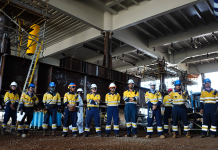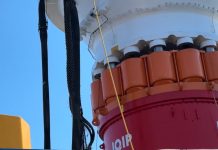One of the most valuable tools that an owner or developer of wind projects has in its planning toolbox is a good preconstruction value engineering methodology. Developers can realize large short- and long-term economic payback if they commit time and resources to value engineering each aspect of the engineering and construction of a wind project early in the development process. Engaging an experienced design/build contractor at an early stage to perform this value engineering analysis insures that a project is designed in a way that maximizes long-term energy production and short-term capital costs for construction.
 Wind project construction is made up of five main areas: (1) civil infrastructure-roads, crane pads, crane paths; (2) electrical collection system-underground and overhead; (3) wind turbine foundations; (4) substation and interconnection facilities; and (5) wind turbine erection. By gathering the right information at an early stage, each of these areas can be optimized to achieve the highest quality with the lowest cost.
Wind project construction is made up of five main areas: (1) civil infrastructure-roads, crane pads, crane paths; (2) electrical collection system-underground and overhead; (3) wind turbine foundations; (4) substation and interconnection facilities; and (5) wind turbine erection. By gathering the right information at an early stage, each of these areas can be optimized to achieve the highest quality with the lowest cost.
Effective preconstruction planning depends upon the early accumulation of basic, but critical, information. Developers should make every effort to develop the following information at the earliest possible stage in the development process:
(1) Geotechnical Information: Solid geotechnical information is the underpinning for the effective design of a number of major wind farm components: (a) wind turbine foundations; (b) roads, crane pads and paths; and (c) underground electrical collection system. Wind turbine foundations make up a significant portion of the overall project cost, and represent one of the most critical risk management items. No shortcuts should be taken in determining the proper wind turbine foundation design. This design begins with a complete understanding of the geotechnical characteristics of the project site. On many projects, the geotechnical investigation is postponed until late in the project development process and costs are budgeted based upon assumed geotechnical conditions.
(2) Topographical/geographic Information: Further optimization of the civil infrastructure (wind turbine locations, project access and turbine string road locations, crane path locations) and the electrical collection system (location) requires detailed knowledge of the physical properties of the project site (i.e. topography, wetlands, existing road system, existing structures, underground pipelines, etc.). In addition, this optimization requires knowledge of the landowner, governmental and regulatory rules and regulations that will apply to the project (easement restrictions, setbacks, road agreements).
(3) Interconnection information and utility requirements: Substation and interconnection facility costs comprise a large percentage of the overall project costs. Accurate interconnection information is critical to the design of the project substation and interconnection facilities.
Ultimately, substation and interconnection facilities design, optimization and pricing is finalized after the Interconnection Agreement (“IA”) is available. The IA typically includes the Facility Study, which specifies the material and equipment that the utility will require for interconnection with the transmission line. However, early stage planning and cost estimating can be done with some basic information: (a) interconnection voltage; (b) point of interconnection location; (c) available routing for transmission line from the project site to the POI, if applicable. The interconnection voltage will help to determine the substation design and the main power transformer specifications.
(4) Turbine Selection and Delivery Timeframe: Early stage development of the project schedule and pricing is highly dependent upon the wind turbine selection and the anticipated delivery dates and delivery rate. The wind turbine loading helps to determine the foundation type and size. The selection of the proper main erection crane (itself a major cost and schedule component) depends upon the turbine type, weight, and hub height. The timing and rate of the wind turbine component deliveries helps to determine the unloading crew size and necessary equipment to mobilize to site (e.g. number of unloading crews, number of unloading cranes and ancillary equipment).
The project schedule must be developed such that the construction of project infrastructure is not impacted by the thaw restrictions, especially when turbine component deliveries are timed immediately before or after thaw restrictions are placed, or lifted.
Experienced design/build contractors can use their construction expertise to assist project developers in the proper design of all major wind project construction components. Early engagement of a contractor to employ a methodical value engineering analysis to develop preliminary project designs can be the difference between an economically viable project, and one that is left on the drawing boards.



























